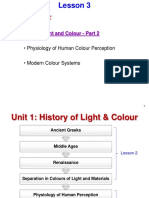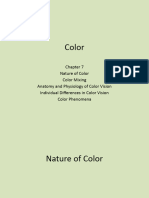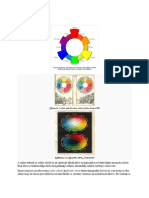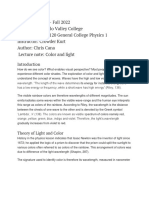0% found this document useful (0 votes)
6 views10 pagesPerception - Chapter 9
The document discusses various aspects of color vision, including types of color blindness, the physics of light and color perception, and the theories of color vision such as trichromatic theory and opponent-process theory. It explains how colors are perceived based on wavelengths, the mixing of paints and lights, and the physiological mechanisms behind color vision, including the role of cone receptors in the retina. Additionally, it covers the historical contributions of figures like Isaac Newton and modern advancements in understanding color perception through experimental evidence.
Uploaded by
lavarielewisCopyright
© © All Rights Reserved
We take content rights seriously. If you suspect this is your content, claim it here.
Available Formats
Download as PDF, TXT or read online on Scribd
0% found this document useful (0 votes)
6 views10 pagesPerception - Chapter 9
The document discusses various aspects of color vision, including types of color blindness, the physics of light and color perception, and the theories of color vision such as trichromatic theory and opponent-process theory. It explains how colors are perceived based on wavelengths, the mixing of paints and lights, and the physiological mechanisms behind color vision, including the role of cone receptors in the retina. Additionally, it covers the historical contributions of figures like Isaac Newton and modern advancements in understanding color perception through experimental evidence.
Uploaded by
lavarielewisCopyright
© © All Rights Reserved
We take content rights seriously. If you suspect this is your content, claim it here.
Available Formats
Download as PDF, TXT or read online on Scribd
/ 10





























































































